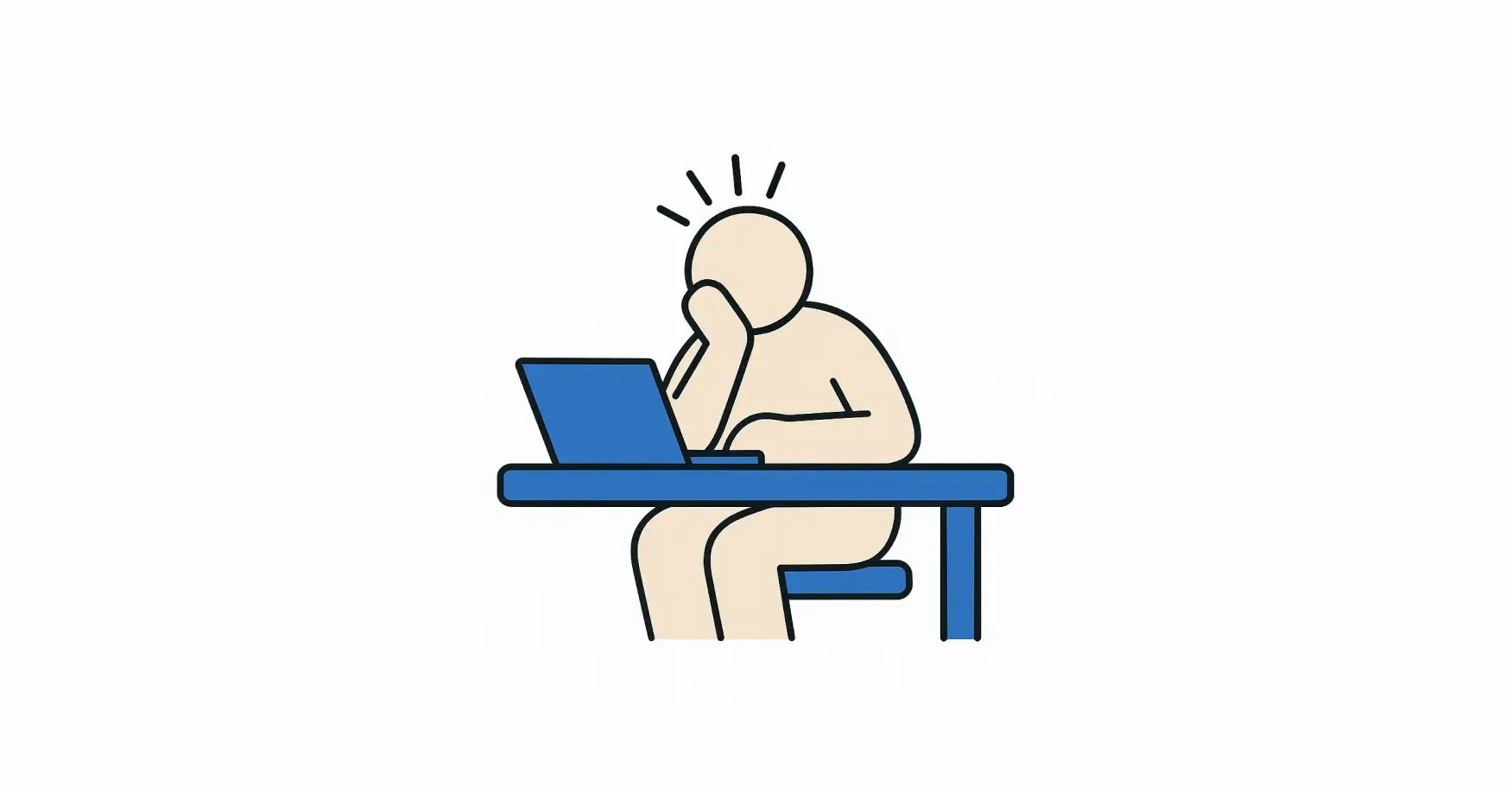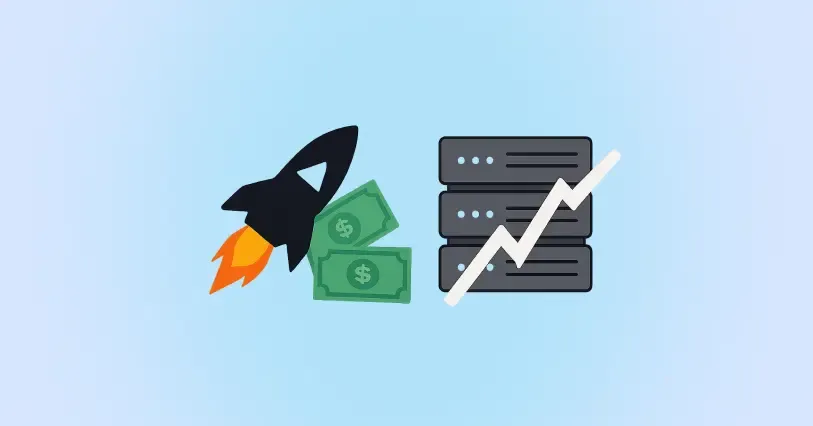Nudges: Real-Life Examples of How We Are Influenced Without Noticing
Discover what a nudge is and how it influences your decisions without banning options. Real examples from the digital world, subscriptions, restaurants, vacations, and movie theaters.
Manuel Sanchez
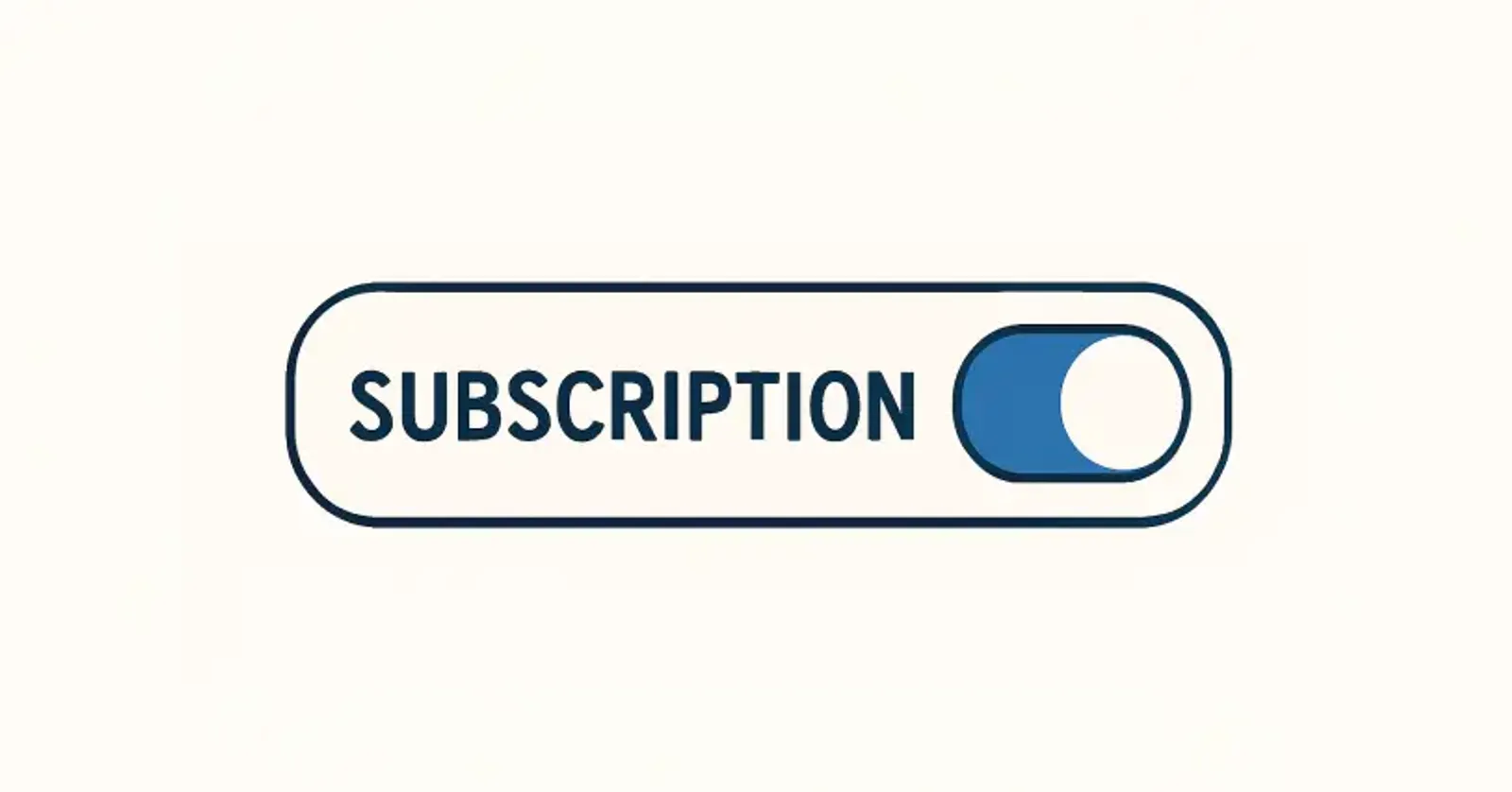
I came up with this article thanks to the UX designer of my team, Jan Skrzypek, who inspired me to explore the concept of nudges and their impact on our decision-making processes at our workplace.
These are the topics we will cover in this article:
You’ve probably left a cinema with a “medium” popcorn that felt huge, renewed a subscription you barely remembered having, or ordered at a restaurant the first thing the waiter recommended.
That’s no coincidence. You’ve been nudged.
What Is a Nudge?
A nudge is a behavioral economics technique that changes the context in which we make decisions to influence our choice. It works without banning anything or by significantly altering economic incentives. Instead of forcing you, it makes the desired option easier, more visible, or more attractive.
The term “nudge” was popularized by economist Richard H. Thaler and legal scholar Cass R. Sunstein in their 2008 book Nudge: Improving Decisions About Health, Wealth, and Happiness, where they explored how small changes in choice architecture can have large impacts on behavior.
It’s like putting fruit at eye level in a supermarket: you can still buy chocolate, but the chances of grabbing an apple increase.
💡 Key idea: When you have many options, the real power lies in how those options are presented.
In the next sections, we’ll explore real-life examples of nudges in various contexts, from digital platforms to physical environments.
Real-Life Examples of Nudges: Digital Platforms
Default Subscriptions
Streaming services often have auto-renew enabled by default. You can opt out, but inertia keeps you paying month after month. Example: Netflix, Spotify, Loom are examples of auto-renew setups.
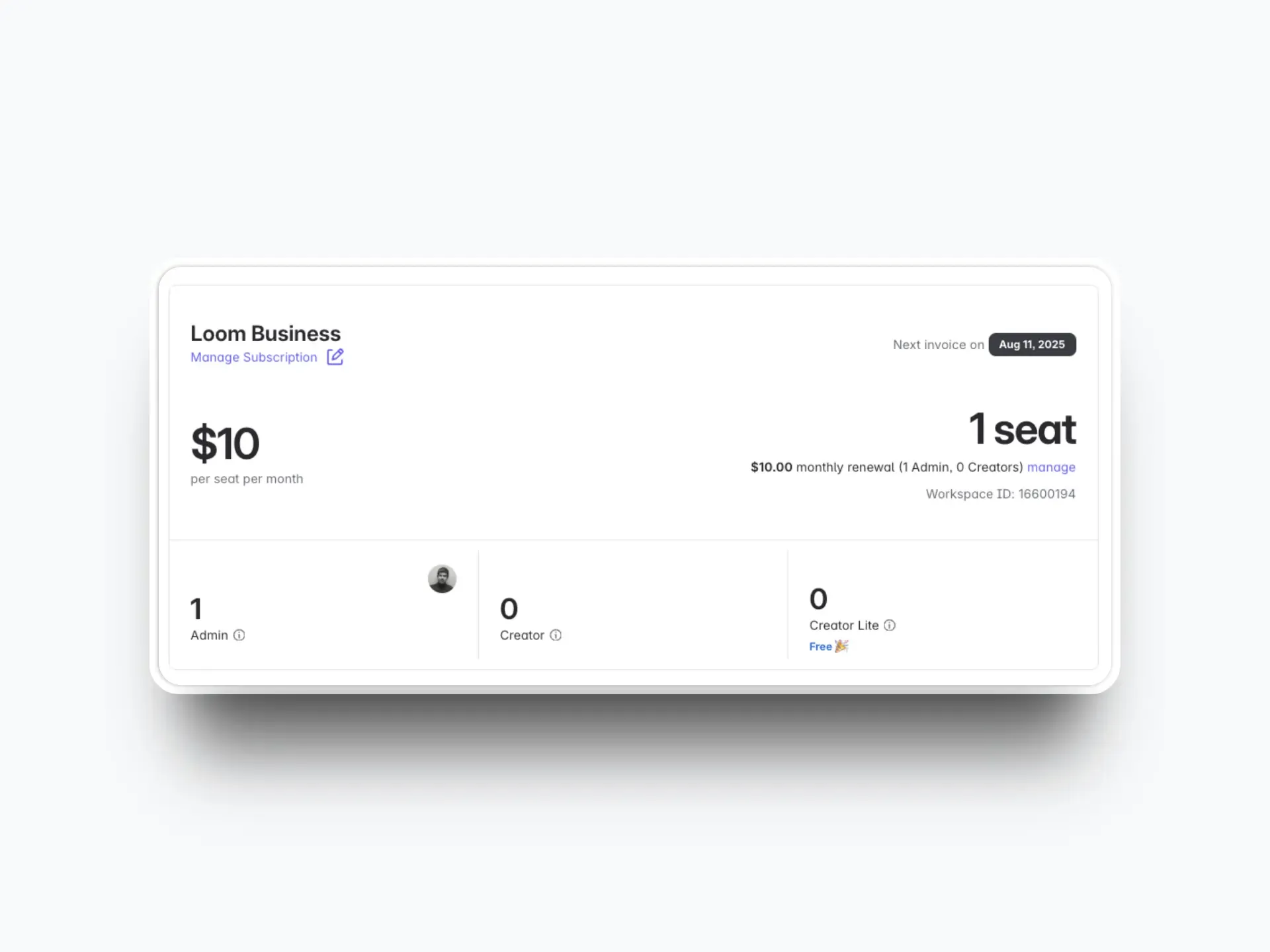
So a lot of SaaS are using this strategy.
- Auto-renew (nudge): Do nothing, keep paying → high retention but less conscious choice. This would be opt-out.
- Manual renew: Actively decide to pay again → lower retention but higher perceived user control. This would be opt-in.
The manual renewal is the opposite to a nudge toward retention, since it adds friction, forcing you to consciously decide to renew.
”Try Free” Buttons
The famous “30-Day Free Trial” or “Get started for free” is a nudge to get you used to the service. Once the trial ends, your payment method might be already stored, and renewal is frictionless.
Let’s see an example from Buttondown, a newsletter platform:
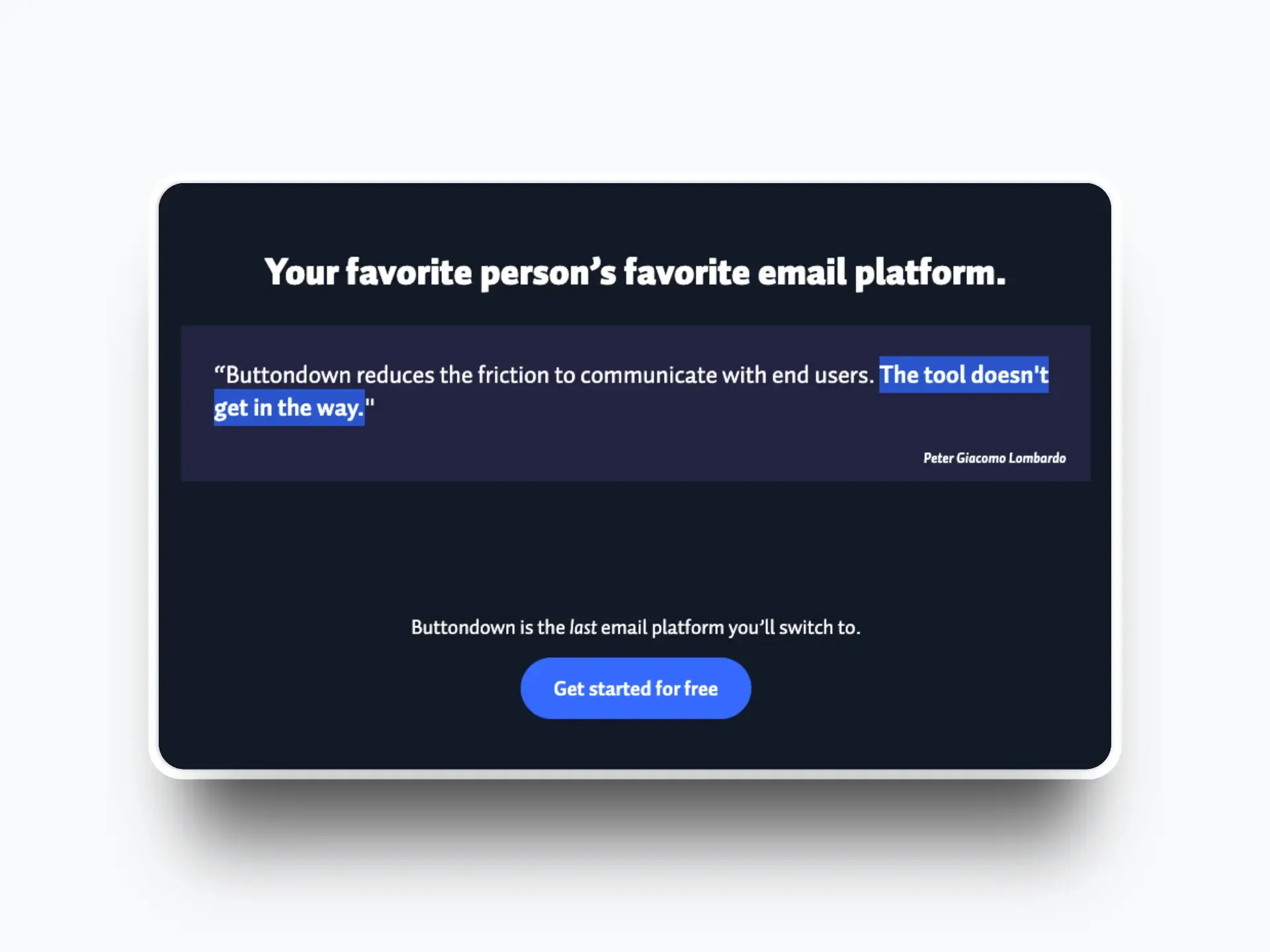
To be honest, Buttondown is also a great example of a nudge that works well in combination other nudges. Let’s analyze that screenshot from top to bottom:
-
Social proof via relatable authority: “Your favorite person’s favorite email platform.” This headline indirectly tells you someone you admire already uses this, which taps into social proof and parasocial influence. Even without naming the person, it sparks curiosity: “Who is my favorite person? If they use it, maybe I should too.”
-
Testimonial framing: A real customer quote is front and center: “Buttondown reduces the friction to communicate with end users. The tool doesn’t get in the way.” - Peter Giacomo Lombardo. This is testimonial social proof, leveraging a named user to reduce perceived risk and increase trust.
-
Highlighting a pain-free experience: They bold and highlight “The tool doesn’t get in the way”. This works as loss aversion framing: they’re assuring you that you won’t suffer from the typical frustrations with other tools.
-
Scarcity of alternatives (positioning): “Buttondown is the last email platform you’ll switch to.” This is commitment framing—positioning the product as the final, ultimate choice so you don’t have to waste time searching elsewhere. It subtly reduces hesitation by appealing to decision simplification.
-
Commitment minimization: “Get started for free” isn’t just a free trial. it’s a low-friction entry point. The wording reduces perceived commitment, which pairs with the testimonial about low friction to make action feel safe.
And to be honest, as a user of Buttondown for the last years, I have to say it is an amazing product (no sponsored content here, I promise).
The “Most Popular” Plan
For a change, let’s start with the image this time. We will be analyzing Canva’s pricing page:
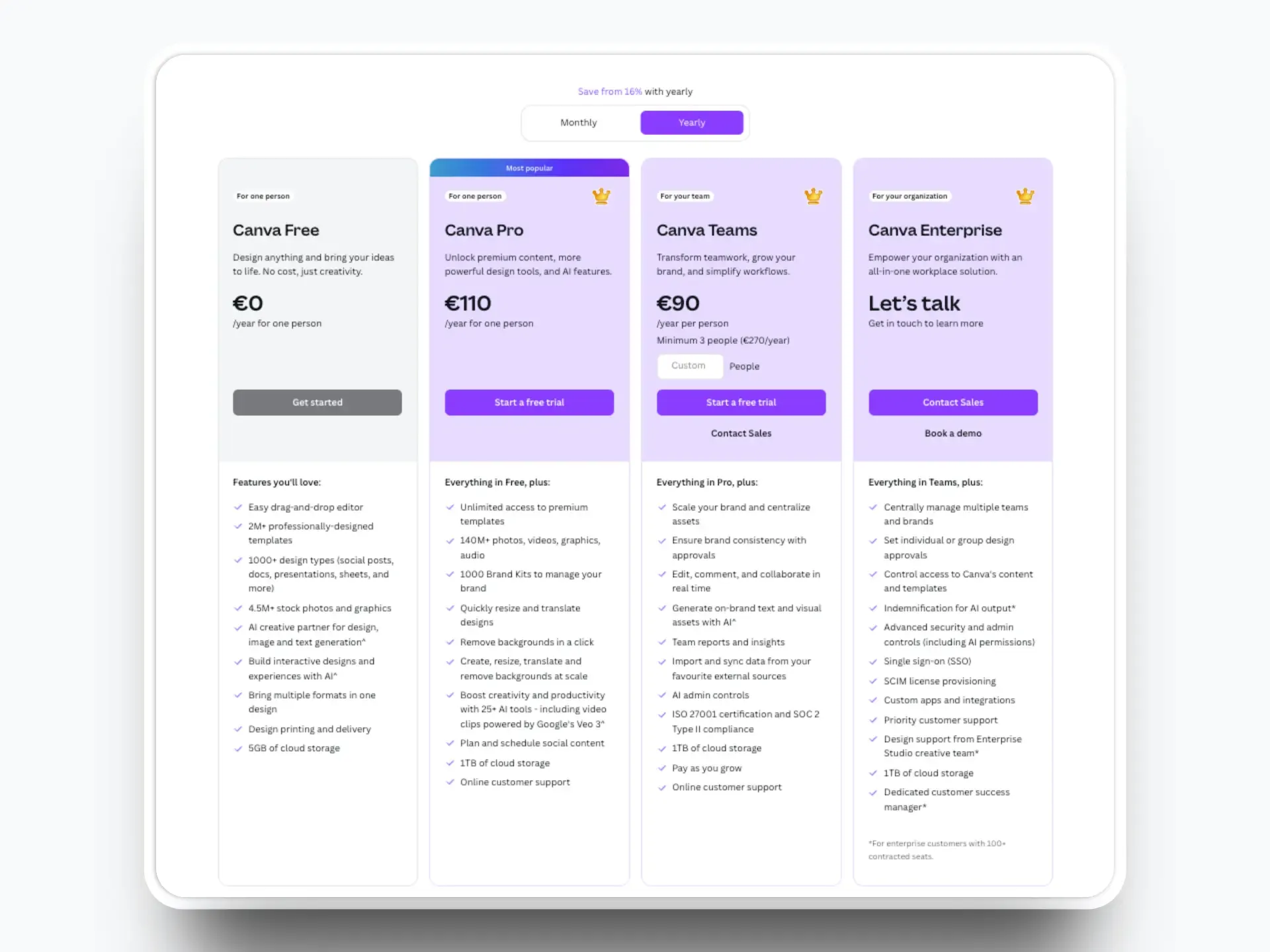
The “Most Popular” tag is a classic example of social proof combined with decision simplification.
It tells you: this is what most people pick. If you’re unsure, the easiest way to avoid a “wrong” choice is to follow the crowd.
Why it works:
- Social proof: If the majority picks it, it must be good.
- Reduced cognitive load: You don’t have to compare every detail, since the choice is pre-validated for you.
- Prestige framing: The crown icon and purple highlight make it feel premium and trustworthy.
But that’s not the only nudge on Canva’s pricing page. There are several others working in parallel:
-
Yearly savings message
Right above the monthly/yearly toggle, Canva shows “Save from 16% with yearly”.
This is loss aversion — you’d be “losing” that discount if you pay monthly.
It also anchors your attention to the bigger upfront payment, locking you in for longer. -
“Everything in Free, plus…”
Instead of overwhelming you with three full feature lists, Canva anchors you in the value of the Free plan and then stacks new features on top.
This uses the endowment effect, you keep everything you already have and just add more. -
Visual contrast
- Free plan: muted gray → feels basic.
- Pro plan: bold color → catches the eye.
- Enterprise: no price (“Let’s talk”) → high anchor that makes Pro look affordable.
-
Identity segmentation
The labels “For one person”, “For your team”, and “For your organization” act as self-identification cues, quickly filtering which plan feels “meant for you”.
In short: Canva’s pricing table isn’t just “informative” — it’s a carefully designed decision-making funnel.
E-commerce Scarcity & Urgency
Here’s a real-world example from Amazon:
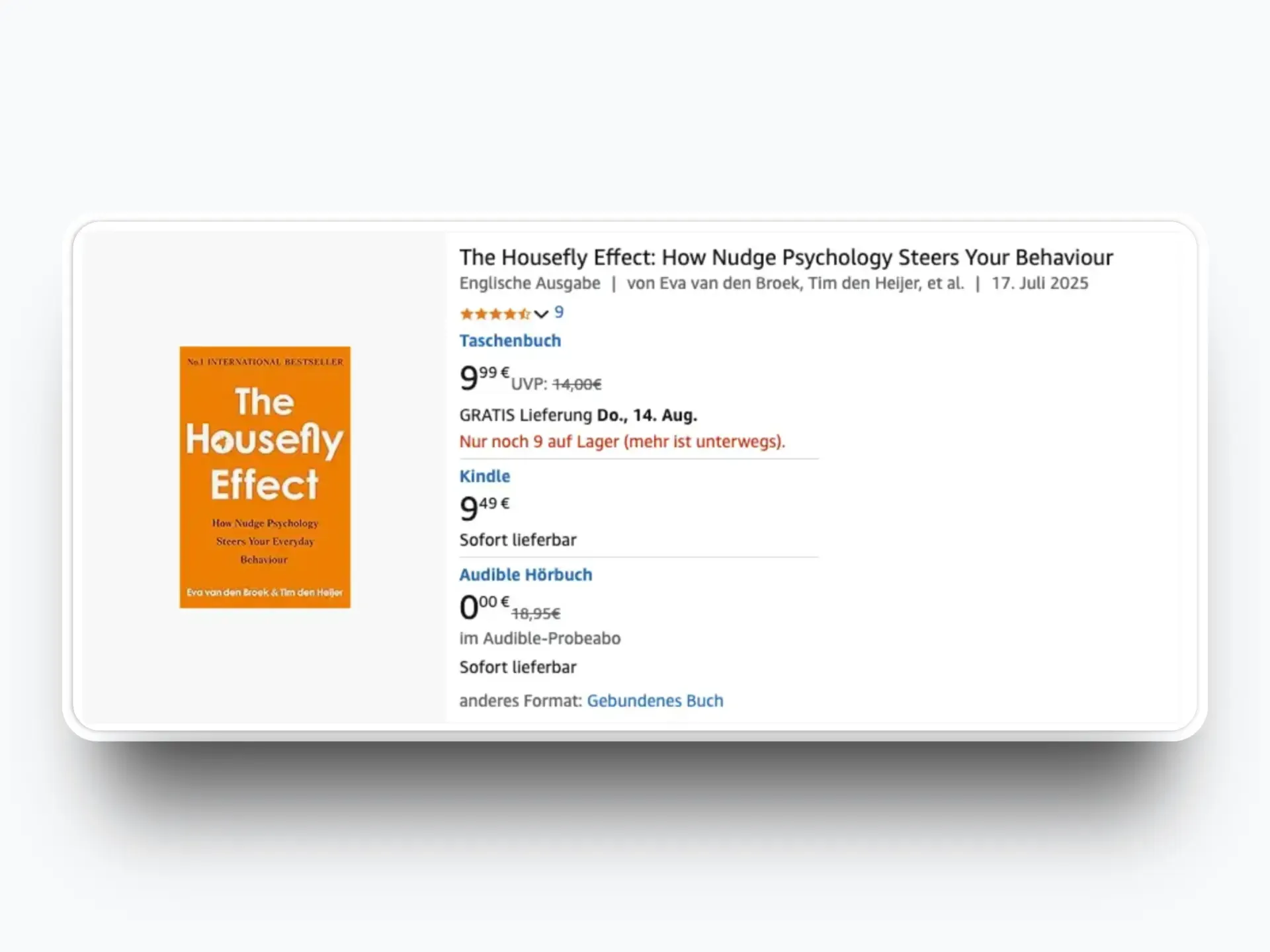
The most obvious nudge here is scarcity with urgency:
- Scarcity cue: “Nur noch 9 auf Lager (mehr ist unterwegs)” (“Only 9 left in stock — more on the way”).
This triggers FOMO (Fear of Missing Out), making you more likely to purchase now rather than wait.
Even if logically you know more are coming, the low number suggests potential unavailability.
But that’s not the only nudge Amazon is deploying here:
-
Urgency + Scarcity synergy
The limited stock message is paired with a specific delivery date (“Gratis Lieferung Do., 14. Aug.”).
This creates a subtle now-or-never feeling. You’d better buy now to get it soon, before it’s gone. -
Anchoring with discounts
The paperback price is shown as 9,99 € with the old price 14,00 € crossed out.
This anchors the value higher, making the new price feel like a bargain. -
Multiple entry points for purchase
- Paperback with discount.
- Kindle edition slightly cheaper.
- Audible version listed at 0,00 € in a free trial.
By offering multiple formats, Amazon reduces friction for different buyer types and keeps you inside their ecosystem.
-
Immediate availability
“Sofort lieferbar” (“Available immediately”) reduces perceived waiting cost, reinforcing urgency and encouraging impulsive purchase.
Why it works:
- Scarcity nudges you to act before losing the opportunity.
- Urgency compresses your decision-making window.
- Anchoring makes the price feel better than it objectively is.
- Multiple formats prevent you from leaving the page without choosing at least one.
This is a masterclass in stacking nudges.
Duolingo’s Full-Loop Engagement System: How Streaks, Hearts, Rewards, and Notifications Keep You Hooked
Duolingo is one of the most successful gamified learning apps in the world — and not just because of its content.
It’s a masterclass in nudge psychology, combining visible progress, artificial scarcity, gamified rewards, and persistent reminders into what I like to call a Full-Loop Engagement System.
Below, we’ll break down each element and see how they connect to form a self-sustaining habit loop.
1. The Streak Effect - Turning Daily Practice into a Commitment
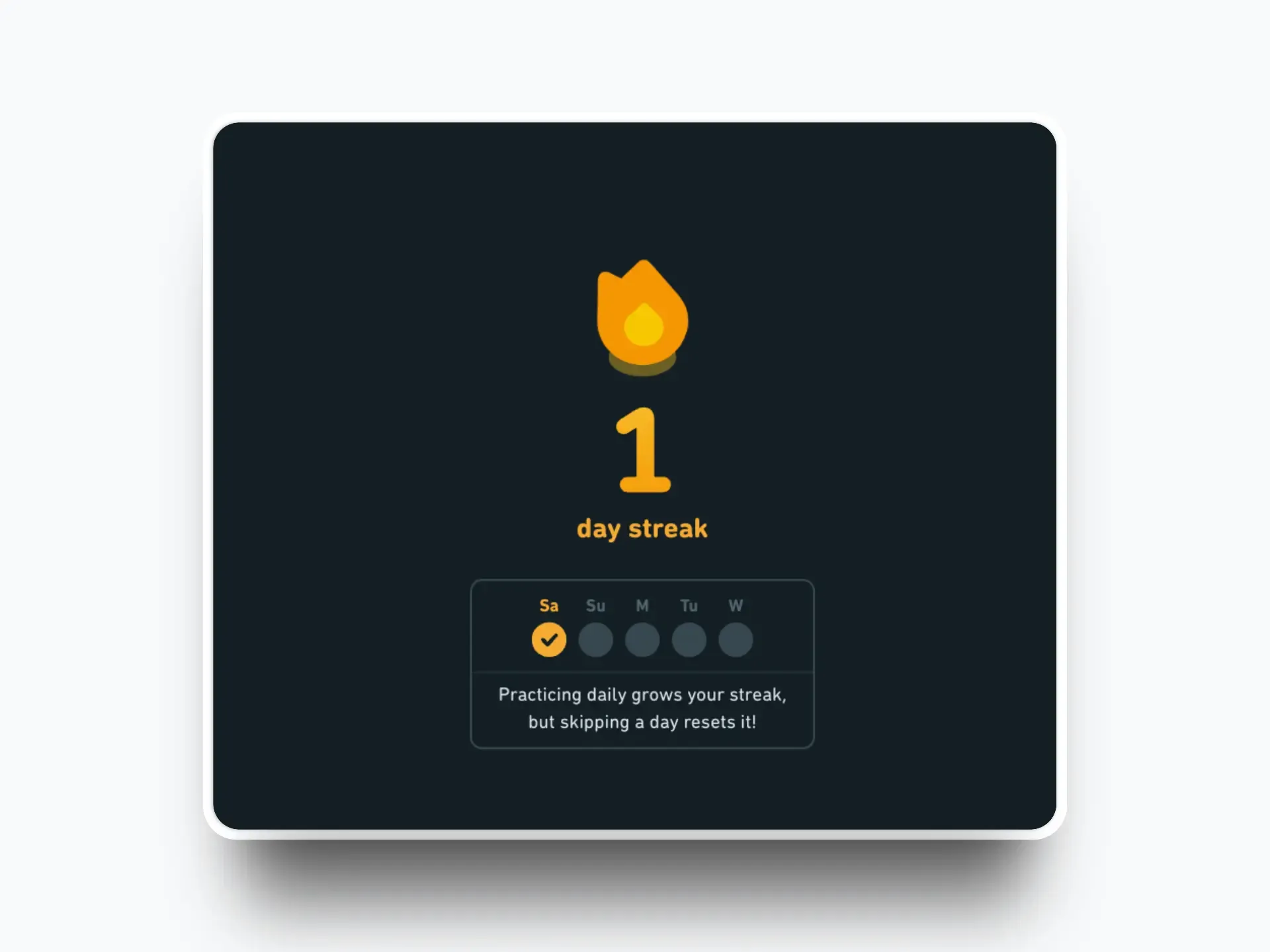
Duolingo leverages visible progress tracking through its streak system.
Users can see exactly how many days they’ve practiced, with milestones like:
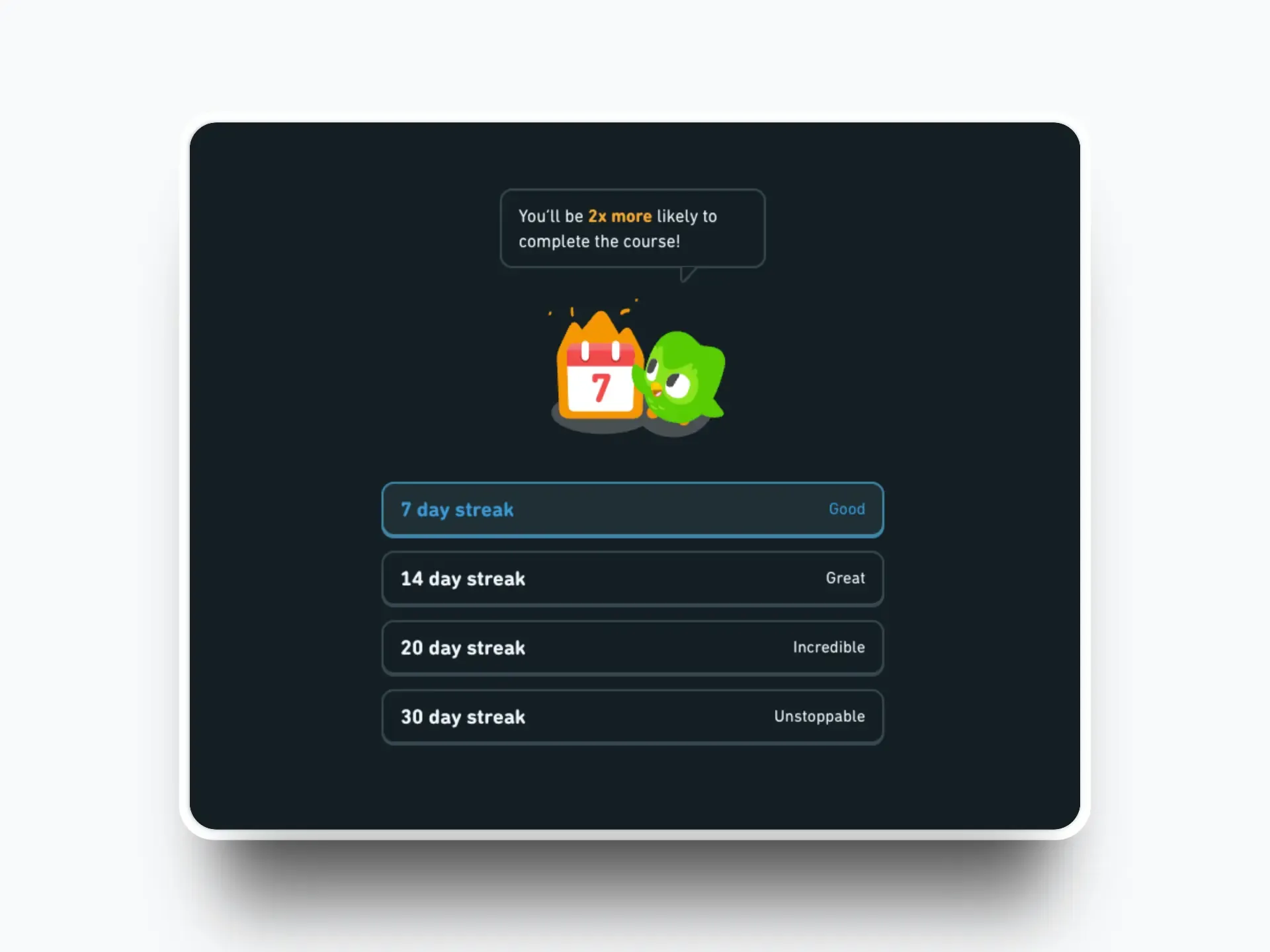
- 7 days = Good
- 14 days = Great
- 20 days = Incredible
- 30 days = Unstoppable
This taps into several psychological principles:
- The Sunk Cost Effect: Once a user has invested time into building a streak, they are less willing to “lose” it.
- Visible Progress Theory: Progress is clearly displayed, making the user feel closer to their goals and motivated to keep going.
- Prestige Labels: The tiered naming (Good, Great, Unstoppable) adds a sense of achievement, even without public sharing.
2. Scarcity of Lives - Mistakes Cost You Hearts
Duolingo’s “Each mistake costs 1 heart” mechanic introduces artificial scarcity to increase engagement and focus.

- Loss Aversion: People feel the pain of losing something (a heart) more than the joy of gaining something of equal value.
- Heightened Focus: With a limited number of mistakes allowed, users concentrate more to avoid “wasting” hearts.
- Monetization Trigger: Losing all hearts creates a natural moment to offer in-app purchases (extra hearts) or prompt users to wait for regeneration — keeping engagement high and revenue flowing.
3. Gamified Rewards - XP, Perfect Scores, and Micro-Celebrations
Every lesson completion comes with a burst of positive reinforcement:
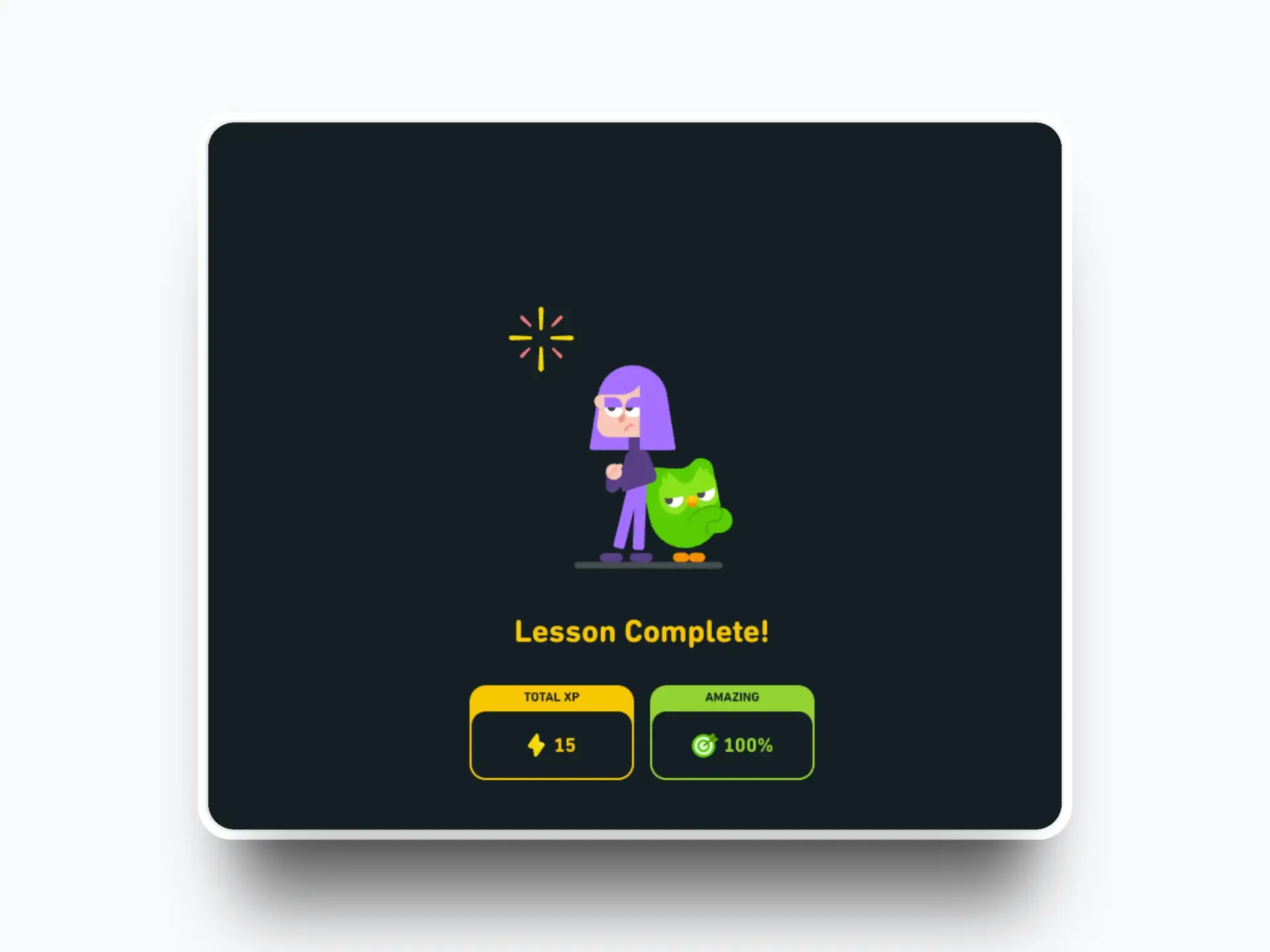
- XP Gain: Points fuel competition on leaderboards, tapping into competitive instincts.
- Perfect Score Labels: “100% Amazing” feedback provides a dopamine hit, making users feel accomplished.
- Micro-Celebrations: Animations, characters, and sounds transform a simple learning moment into a mini-victory.
4. Notifications - The Invisible Hand of Habit Reinforcement
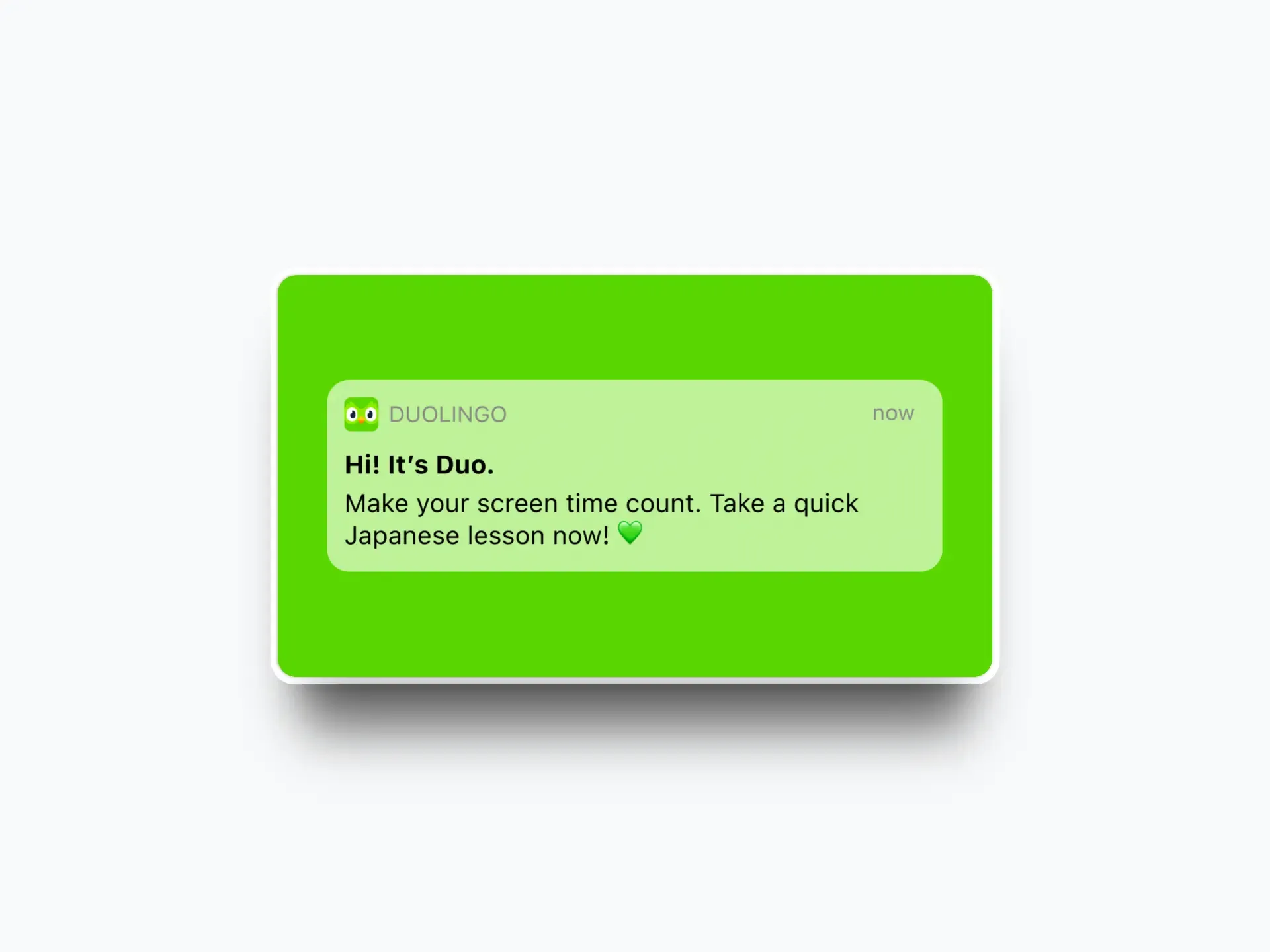
Push notifications are Duolingo’s way of extending the engagement loop outside the app. They use a blend of:
- Streak Protection Reminders: “You’re about to lose your streak! Practice now!” leverages fear of loss.
- Friendly Social Pressure: Messages often come from the mascot (“Duo”) in a lighthearted yet insistent tone, making it harder to ignore.
- Micro-Challenges: “Complete your daily goal in just 5 minutes!” lowers the barrier to entry, making users more likely to open the app.
The Full-Loop Engagement System
When combined, these elements create a self-reinforcing cycle:
- Streaks build long-term commitment.
- Hearts make each session feel valuable and scarce.
- Rewards make progress feel exciting and worth repeating.
- Notifications pull the user back into the loop before the habit fades.
It’s not just about learning a language. It’s about keeping you inside an ongoing cycle of small wins, small risks, and constant reminders.
If you’re building your own SaaS or app, Duolingo’s model is a powerful case study in how multiple nudges can connect to form an addictive habit loop.
The secret is not one single mechanic — it’s the way each mechanic feeds into the next.
Physical world examples
The Decoy Effect: Popcorn Sizes at the Cinema
Imagine you’re at the cinema. You see these prices for popcorn:
- Small: €4.00
- Medium: €6.00
- Large: €6.50
At first glance, the large feels like a steal, since it is only €0.50 more than the medium for much more popcorn. The medium isn’t designed to be the most popular choice — it’s a decoy meant to make the large look more attractive.
This is working because the decoy effect exploits asymmetric dominance:
-
Relative comparison, not absolute value: People rarely evaluate prices in isolation; they compare them to what’s next to them.
-
Perceived value boost: The small gap in price between medium and large exaggerates the “value” of the larger option.
-
Decision simplification: Choosing becomes easy — “I might as well get the large.”
The decoy is intentionally close in price to the target option but clearly worse in value, making the target the obvious choice.
Where You’ve Seen It
- Cinema concessions: Medium popcorn vs. large popcorn.
- Coffee shops: Medium latte almost same price as a large.
- SaaS pricing tables: Mid-tier plan close in price to premium tier.
The Waiter’s “Recommendation”
When you ask “What do you recommend?”, some waiters mention first or last the dishes the restaurant wants to push. Thanks to primacy and recency effects, you’re more likely to choose them.
Menus That Guide Your Eyes
Profitable dishes may be boxed, use different fonts, or be placed in menu “hot zones.” All options are available, but the design pushes you toward certain ones.
Vacation Package Add-Ons
Online booking platforms may pre-select “all-inclusive” or extra activities. You can uncheck them, but the default setting does the work.
Why Do We Fall for Nudges?
Because we often make decisions in automatic mode (System 1 in Daniel Kahneman’s terms). Nudges are effective because they:
- Take advantage of our automatic routines.
- Avoid complex conscious decisions.
- Reduce friction toward the desired path.
- Avoid defensive reactions (no options are removed).
They may also be culturally sensitive — a nudge that works in Germany may not work in Beijing.
Conclusion: Use or Be Used
Nudges aren’t inherently bad. They can guide us toward healthier, more sustainable, or more convenient choices. The problem arises when they maximize profits at the expense of our real needs.
Next time you renew a subscription or pick a “recommended” dish, ask yourself: Is this my choice, or did someone design the path for me to end up here?
Written with the help of AI. (Claude Sonnet 4 & ChatGPT 5)FAQ about Nudges
A nudge is a subtle change in the way choices are presented, designed to influence behavior without removing options or significantly altering economic incentives. It guides people toward a preferred choice while preserving freedom of decision.
Share article
